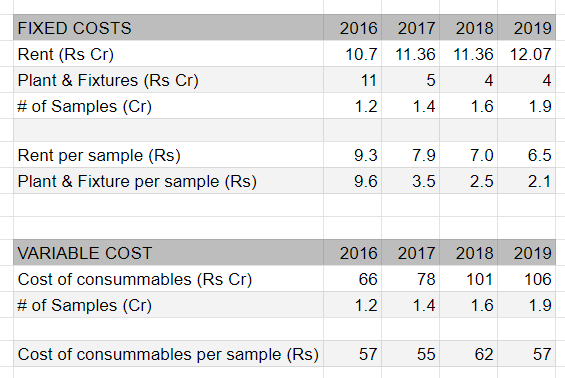This blog is about economies of scale. Instead of a bland title, I thought, a better title would be Sultans of scale, inspired by Sultans of swing by Dire Straits.
Here is an example of economies of scale. A manufacturer of widgets says : If I produce, 100 units, it costs me Rs 1 per unit to manufacture. But if I produce, 1000 units, it costs me Rs 0.9 per unit. And if I manufacture 10,000 units, it costs me just Rs 0.5 per unit.
Why does this happen? There are essentially 2 costs – fixed costs and variable costs. Fixed costs are fixed and don’t change with the production. For example- the rent on the building, does not change whether you work 8 hours or 24 hours. Variable costs, on the other hand, change proportionately with the production. More production => more variable costs and less production leads => less variable costs. Like the power consumption. If you work 8 hours, you consume say 8 units of power and if you work 24 hours, you consume 24 units of power.
Therefore as the volume increases, the fixed costs get apportioned over a larger number of units and this drives down the prices. You can see this in the graph below too.

Source: Strategy for execs
Is this just some nice sounding theory?
No. In fact, there are several companies like Amazon, Costco, Wal-mart, Dmart, Thyrocare, Indigo that have their business models built on it. They are low price-high volume players. That is, the offerings are priced low enough to attract higher volumes. Because of economies of scale, the fixed costs get apportioned over bigger volumes which drives down the cost structure lower. Therefore the company can lower its prices further to attract even more volumes and so on.

For example, Thyrocare, a medical diagnostics has its entire business around on it. It procures blood samples from patients all over India and tests them at its facilities. Because all the tests are done in a few locations, the fixed costs such as rent and lab equipment are controlled and they get apportioned over a large number of samples. Therefore, as the number of samples increase over time, the cost per sample reduces. However, Variable costs such as the reagents needed per test are in direct proportion to the sample volume, remain more or less constant.

Infosys, my last employer, in another example. It has a large training facility in Mysuru, India where it can train thousands of fresh recruits. By having one large facility its training cost per trainee is among the lowest in the world. Infosys has several large campuses in India that seat tens of thousands of its employees which again reduces its overhead costs per employee. For example, Narayana Murthy, once anecdotally mentioned in a town hall that Infosys has the lowest cost of air conditioning per employee. Now, when I think about it, this came about because of economies of scale. All of these savings in overhead costs (fixed costs) allow Infosys to price itself competitively in the market.
Economies of scale is a powerful idea from microeconomics. Some of the largest companies, worldwide have put this to good use.
Thanks for reading! Hope you enjoyed this short blog.
Featured photo by Pixabay on Pexels

3 thoughts on “Sultans of scale”